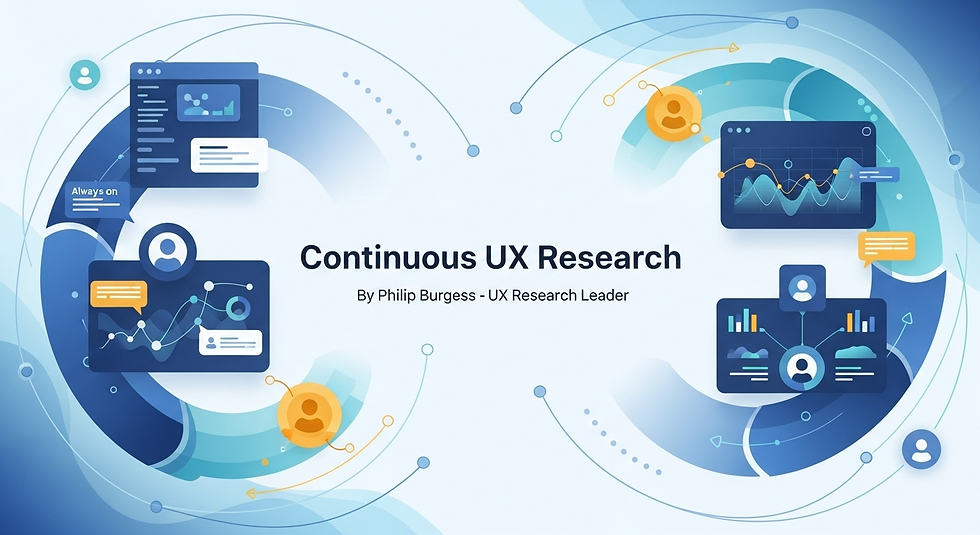The Role of UX Research Storytelling in Human-AI Collaboration: Turning Complex AI Findings into Executive-Ready Narratives
- Philip Burgess
- Sep 30
- 2 min read
Updated: Oct 21
By Philip Burgess - UX Research Leader
Why UX Research Storytelling Matters in the Age of AI
AI is transforming UX research by generating faster insights, surfacing hidden patterns, and analyzing vast datasets. But AI alone cannot bridge the gap between raw findings and strategic decisions. That bridge is storytelling. It’s how researchers translate complex, technical AI outputs into compelling narratives that executives can act on.
The Challenge of AI-Generated Insights
Overwhelming Data: AI can produce thousands of data points, sentiment clusters, or heatmaps.
Lack of Context: Machine outputs lack the human nuance that gives findings relevance.
Executive Attention: Leaders want clarity, brevity, and business impact — not raw dashboards.

How Storytelling Elevates AI Collaboration
Humanizing the Data
Pair AI findings with participant quotes, videos, or anecdotes.
Transform a sentiment score into a relatable human story.
Framing for Business Impact
Translate AI metrics into ROI language: cost savings, revenue growth, or risk reduction.
Example: “AI detected a 40% drop-off in onboarding — which equates to $2M in lost annual revenue.”
Building a Narrative Arc
Beginning: Define the problem or opportunity.
Middle: Show AI-driven evidence and human insight.
End: Present clear recommendations and business outcomes.
Visual Storytelling
Use infographics, dashboards, and journey maps.
Replace raw tables with compelling visuals that show change over time or comparisons.
Best Practices for Storytelling with AI
Keep it Simple: Distill complex outputs into 3–5 key insights.
Blend Voices: Combine machine-driven patterns with human-centered evidence.
Know Your Audience: Adapt the narrative for executives vs. product teams.
Action Over Analysis: Always link insights to a recommended next step.
Practical Example
AI Finding: Predictive model highlights high churn risk for first-time users.
Storytelling Layer: Illustrate with a persona narrative: “Meet Sarah. She tried to onboard but dropped off after 3 steps. AI shows 60% of users like Sarah abandon here — costing us $500K annually.”
Executive Outcome: Clear, human-centered recommendation to redesign onboarding.
Closing Thought
AI can crunch data at superhuman speed, but humans make meaning. Storytelling is the multiplier that turns AI’s analytical power into strategic influence. In human-AI collaboration, the future of research isn’t just data-driven — it’s story-driven.



Comments